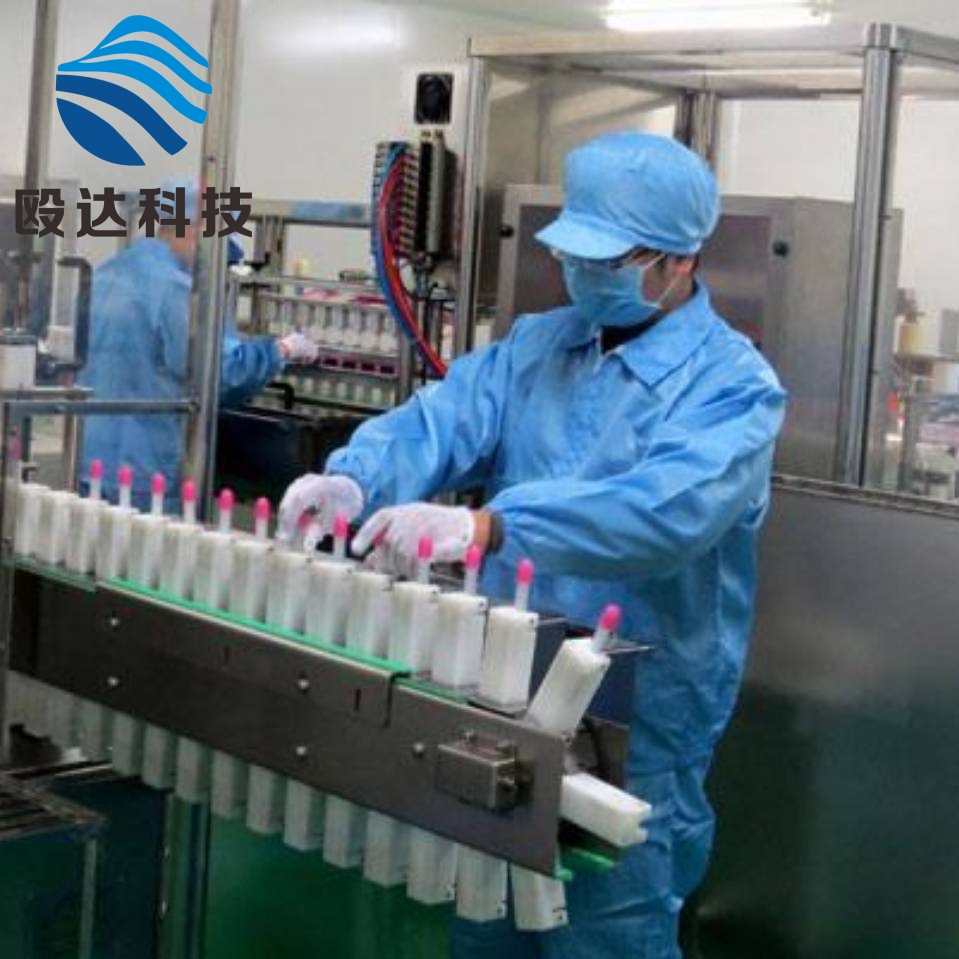-
Categories
-
Pharmaceutical Intermediates
-
Active Pharmaceutical Ingredients
-
Food Additives
- Industrial Coatings
- Agrochemicals
- Dyes and Pigments
- Surfactant
- Flavors and Fragrances
- Chemical Reagents
- Catalyst and Auxiliary
- Natural Products
- Inorganic Chemistry
-
Organic Chemistry
-
Biochemical Engineering
- Analytical Chemistry
- Cosmetic Ingredient
-
Pharmaceutical Intermediates
Promotion
ECHEMI Mall
Wholesale
Weekly Price
Exhibition
News
-
Trade Service
At present, the new crown pneumonia (COVID-19) outbreak is still spreading around the world.
statistics released by WHO on 23 October, the cumulative number of confirmed cases of neo-crown pneumonia worldwide reached 41570883, with a cumulative total of 1134,940 deaths.
445,419 new confirmed cases in one day worldwide, the highest number since the outbreak began.
October 23, 2020, a team of professors from Tongji University School of Medicine, left, published a research paper online in Cell Products entitled "Single-cell analysissd lung progenitor cells in COVID-19 patients", which sheds light on the regenerative repair mechanisms that stem cells in the lungs of patients with neo-pneumonia may be involved in.
new coronavirus infections cause damage to the tissue structure of the lungs, often progressing into severe respiratory distress syndrome (Acute respiratory distress syndrome, ARDS) and eventually respiratory failure, which is the leading cause of death in patients with various types of viral severe pneumonia.
existing pathology and other studies show that the pathogenesis of ARDS is mainly the coronavirus attacking altrual cells after inducing an immune response, immune cell immersion led to the destruction of the endostrocemic structure of the alcodes, so that plasma, plasma protein and blood cells into the pulmonary interstitial and altrual cavity, forming pulmonary edema.
due to the destruction of the albathic skin tissue, edema poured into the albath, resulting in the alba bubble dispersion function is limited, unable to exercise normal breathing function.
At the same time, as tissue damage intensified, cells further released various inflammatory factors to form the so-called "cytokine storm", which eventually completely destroyed most of the alfurhea and bronchine breathing structures in the lungs, causing severe misalignment of the ventilation-blood flow ratio, leading to stubborn hypoxemia and eventual patient death.
but some patients will fully restore lung function after lung damage, and the mechanism and key factors of lung regeneration repair in patients with coronary pneumonia are not yet clear.
previous studies, the team has confirmed the existence of KRT5/P63 double-positive cells in the human lungs, which have the potential to self-renew and differentiate into different types of mature lung cells.
also there are currently literature reporting that TM4SF1-positive cells in the lungs can regenerate damaged bronchos and alba bubble tissue.
So Professor Zuo believes that in the process of regeneration of the carpentry tissue in the lungs of patients with new coronary pneumonia, the role of lung stem cells in regenerative repair, such as the regeneration of albath cells and the rebuilding of the skin barrier.
may shed light on the regeneration of lung tissue in patients with neo-coronary pneumonia.
this enables lung stem cells to quickly repair damaged analveic and bronchid structures, thereby re-establishing stable gas-blood circulation, improving blood oxygen pressure and oxygen saturation, in order to save patients' lives as much as possible.
this is a new way of thinking to treat viral pneumonia from the perspective of the cause of tissue regeneration repair.
outbreak of the new crown, the left team began research on stem cells in the lungs of patients with neo-crown pneumonia.
this work used single-cell RNA sequencing analysis techniques to analyze cellular composition in bronchopulmonary dosing lotions (Bronchoalveolar lavage fluid, BALF) in patients with neocyto pneumonia.
collection of BALF is a very effective method of sampling, it can provide important information for the entire lower respiratory tract.
left, the team analyzed and compared BALF for patients with mild and severe symptoms of new coronary pneumonia, as well as healthy people.
results showed that there was a significant increase in two groups of lung stem cells, TM4SF1-positive and KRT5-positive, in BALF in patients with severe symptoms of new coronary pneumonia, compared to patients with mild symptoms and healthy people.
To study the role of these two groups of lung stem cells in patients with new coronary pneumonia, further research by the team left shows that TM4SF1-positive stem cells in the lungs of patients with severe symptoms of new coronary pneumonia have a higher proportion of co-expression of mature vesicle cell markers, which reveals that TM4SF1-positive stem cells in patients with new coronary pneumonia may be involved in the regeneration and repair process of the veneer.
GFP-positive lung stem cells (green) prevent immune cells (red) from leaching and, in order to study the role of KRT5-positive stem cells in the lungs of patients with severe new coronary pneumonia, left, the team transplanted cultured KRT5-positive stem cells into the lungs of lung-damaged mice.
results show that transplanted KRT5-positive stem cells can differentiate into alveolar barrier cells (ABCs) to repair damaged alveolar barrier cells, thus preventing damaged alveolar cells from being soaked by immune cells.
further studies have shown that there are more vesicle barrier cells regenerating in BALF in patients with severe symptoms of new coronary pneumonia.
After further study of the molecular regulatory mechanism of KRT5-positive stem cells, the team found that KRT5-positive stem cells were stimulated by hypoxia after the breakage of the vesicle structure, which regulated its differentiation in the direction of the velecular barrier cells and repaired the regenerative broken structure.
showed that after infection with neocyto pneumonia, patients with severe symptoms of BALF will significantly increase two groups of lung stem cells, one KRT5-positive stem cells will differentiate into analgesic barrier cells to repair broken structures, to avoid immune cell immersion, while another TM4SF1-positive stem cells will produce functional vele cells.
two lung stem cells can work together in acute injury to repair and regenerate the tissue structure of the alba bubble.
Left for the team revealed the new coronary pneumonia patients lung stem cells may participate in the regenerative repair mechanism, for the follow-up use of stem cells to treat patients with new coronary pneumonia, from the perspective of the cause of tissue regeneration repair to start the treatment of viral pneumonia is instructive.
, the above results based on biometric analysis have yet to be further further studied and demonstrated.
left for the team to reveal the new coronavirus infection stem cells involved in the regenerative repair mechanism of the schematic left for the professor as the author of the paper."
Left is the co-first author of this thesis, namely Zhao Zixian, a doctoral student, Zhao Yu, a master's student, and Zhou Yueqing, a doctoral student.
Tongji University School of Medicine, Tongji University Affiliated Oriental Hospital Shanghai Zhangjiang Independent Innovation Demonstration Zone Stem Cell Translational Medical Base Stem Cell Preparation and Quality Inspection Platform, Suzhou Jimei Ruisheng Medical Technology Co., Ltd. and other units to provide important support for research.
, the author pays high tribute to the medical workers who died in the global fight against the epidemic.







